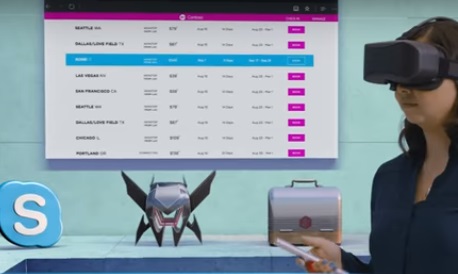Inside Microsoft's plan to make Windows the center of the 3D universe

For the past couple of years, Microsoft has been doing a lot of show and tell around the promises of holographic computing.

But now it's time for the company to demonstrate to users why they'll benefit if Windows becomes the center of the 3D universe.
Next week at the company's October 26 Windows and hardware event, Microsoft officials could be ready to try to make that case. And Windows 10 "Redstone 2" -- the next major update to Windows 10 -- will be at the center of that campaign.
We already know that with Redstone 2 -- which is expected to be generally available starting in March 2017 -- Microsoft will be adding its Windows Holographic shell to the Windows 10 desktop OS. (That effort is codenamed "Oasis," I've heard.) This will allow Windows 10 PCs to work with what Microsoft is hoping will be a fleet of Windows Holographic-powered devices of all kinds.
But what will bringing Windows Holographic/3D experiences to the PC do for users who want to do more than just examine holograms from behind their augmented reality/virtual reality headsets?
Sure, you can already interact with your calendar or make a Skype call using Microsoft's HoloLens goggles. But Microsoft needs to make a case for why holographic computing will make Windows users more productive. Why and how will using PowerPoint, Excel or PowerBI in 3D, (or in a mixed/combined 2D/3D environment) be better than using these apps in 2D alone? Will there be a new generation of 3D apps from Microsoft (and ultimately other vendors) that will make users clamor for Windows Holographic PCs and devices?
I'm thinking one of the ways the Windows and Devices team could do this is via the 3D version of Microsoft Paint which leaked out earlier this month. My sources say that 3D Paint is what is also known as "Beihai." (I wrote about codename Beihai in January, noting it was a consumer app being developed by the same team that did Skype for HoloLens.)
The WalkingCat (@h0x0d on Twitter) recently discovered a script for a Behai announcement video. That script also mentions 3D PowerPoint.
Think about it. The coming 3D version of Paint could provide a simple a way to create and modify 3D objects, the same way the existing version of Paint allows users to create 2D objects. If consumers could use a 3D printer to print your 3D-created Paint object, voila! Now 3D Windows lets you get more creative and productive.
The WalkingCat also recently discovered a bio of Chris Pratley, who is now listed as "Studio Manager of Evoke," which is "a creative media applications team in the Windows and Devices group at Microsoft." The Microsoft Evoke Studio team is developing photo, video and "3D storytelling tools and experiences for mobile, PC and cloud," Pratley's updated bio says. I wouldn't be surprised if Evoke is another way Microsoft hopes to deliver on its October 26 theme of "Imagine what you'll do" (with 3D).
I heard a month ago that Microsoft is planning to show off how users can "turn your desk into a studio" during its October 26 event. Maybe there are multiple meanings in that slogan ...